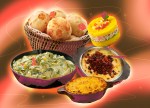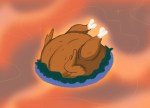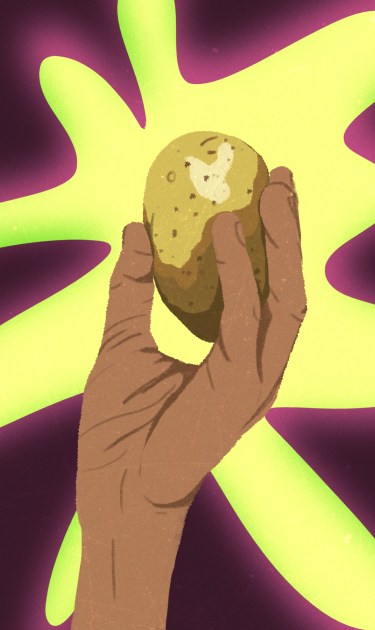Over the course of our agricultural revolution, humans have come to view the potato as synonymous with heartiness, sustenance, and in some cases, even survival. It’s a staple crop that provides energy and nutrition for millions of people around the globe, now ranking in the top four of the world’s most essential foods. And while this starchy food is often associated with the colder months or our filling Thanksgiving meals, many of us still enjoy potatoes year-round in more ways than we can probably count on one hand.
Whether they’re served up fried, baked, boiled, pickled, or even mashed with plenty of butter, our base standard for potatoes is that they should always be tasty and never some bland pile of mush. However, our deep familiarity with the ingredient has also stripped some of its well-deserved street cred. We owe a lot to the lumpy spuds that sit in a sack on our pantry floor. This staple crop sustained Indigenous civilizations for centuries, pulled much of Europe out of persistent famine, and helped fuel the human race’s rapid industrialization over the past few centuries. The potato, as much as we like to call it dull or uninteresting, was one of the foods that changed the world forever.
One of the biggest issues that have plagued the conversation surrounding food culture is the Eurocentric lens many view it through. It’s easy to forget how the culinary heritage of Italy, Spain, or France wouldn’t look or taste the same without ingredients like the tomato, maize, and, of course, the famous potato. Anyone who cares to dig deeper will eventually come to find that all of these foods have origins in Latin America, therefore signifying that the European cuisines held on high pedestals by some owe much of their foundation to the Western Hemisphere. In other words, to better understand the potato is to better understand modern history, starting with the Incan people of South America’s Andes Mountains.
It’s believed that the potato first originated up to 13,000 years ago in the Andean highlands between southern Peru and Bolivia, where it was first domesticated by the local Incan population sometime between 8,000-5,000 B.C. The diversity of potatoes in the South American mountains was extraordinary, with nearly 5,000 different varieties preserved by Peru’s International Potato Center today. But with such an abundance also came a learning curve for the Incan communities, who realized that some species are highly toxic. Although the human settlers eventually bred non-poisonous varieties, the toxic spuds were, and still are, enjoyed with some ingenuity. After observing how herds of wild vicuñas would eat the poisonous potatoes by first licking edible clay, the Incans gave it a shot and discovered that the clay miraculously neutralizes the crop’s toxins. These harmful potatoes can also be prepared through a process of repeated stomping and overnight freezing until they transform into chalky chuños—aka one of the world’s first freeze-dried foods.

When the Spanish arrived in Peru in 1532, they were not necessarily impressed with the spuds nor the dried chuños the natives were eating. Nevertheless, they eventually (albeit reluctantly) adopted the staple crop and used it as a means to feed their navy during long voyages across the Atlantic. Once the potato landed on Spanish soil in 1570, the rest of the continent was not keen on embracing this foreign crop either. It took centuries for Europeans to come around to eating potatoes, mainly because they found them unsightly, not suitable for human consumption, and, in some cases, a product of the devil or witchcraft. Many European monarchs urged their hungry constituents to embrace the potato as a means of survival, but the frequent famines that ravaged Europe throughout the 16th and 19th centuries made the reliable tuber all the more appealing. The final result was a reliable and highly nutritious solution to famine and a crop that could help ease the impacts of diseases like scurvy, tuberculosis, and measles. Europe’s population exploded, along with the populations of wherever the potato was taken to. The once-feared spud had given Europe the power to colonize the four corners of the globe and alter the course of human history.
The majority of potato varieties grown today originate from a Chilean cultivar, which grew in prominence in the 19th century. China is now the largest producer of potatoes in the world and accounts for nearly a quarter of the world’s production. Once the Chinese government saw the potato as a suitable alternative to rice and noodles, which have contributed to increasing water and land shortages, the crop has become a staple in the country’s mountainous regions. The potato plays a significant role in Indian and Pakistani cuisines, with aloo matar and aloo bhujia being notable dishes. Some vodka distillers in Russia and northern Europe have turned to potatoes as the main ingredient. These spuds also made their way to Africa, although much later. Since its arrival in the early 19th century, countries like Egypt, Malawi, and Nigeria have become major exporters with common recipes from the continent, including Ugandan curried potatoes and Kenyan irio.
Regardless of its international success, the potato still has a special place in Latin America’s cuisine. They’re found in Mexican tacos de papa, Peruvian causa, Cuban papas rellenas, and Argentinian pastel de papa. We see them in our caldos, tamales, and even dried up as chuños in Bolivian dishes. Latin Americans should take pride, not only in our regional cuisines but also in how our tierra has shaped the world we live in.

Our land is bountiful and produces some of the world’s most beloved foods. Understanding how we’ve played a defining role in food history is important to preserving our culinary identities, but also protecting our unique place within that narrative. Doing so also reminds us just how interconnected we really are, from one dinner table to another. No matter what kind of Thanksgiving meal you find yourself at this year, know that those creamy mashed potatoes are still a little Latin American, even if they don’t look like it.




